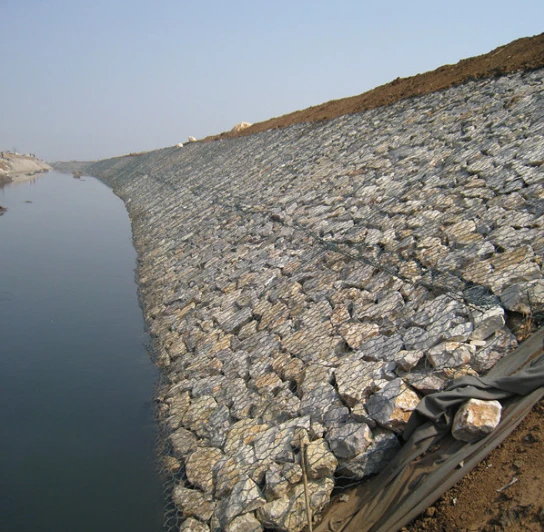ធ្នូ . 18, 2024 07:26 Back to list
Creative Uses of Gabion Baskets for Stunning Landscape Design Ideas
The Beauty and Utility of Gabion Baskets in Landscaping
Gabion baskets, often perceived as mere structures for erosion control or engineering projects, have increasingly found their way into the world of landscaping. These versatile wire mesh containers, filled with stones, rocks, or other materials, offer a unique blend of functionality and aesthetic appeal, making them an ideal choice for modern landscape design.
Understanding Gabion Baskets
Gabion baskets originated from the Italian word gabbione, meaning big cage. Historically, these baskets were used for flood control, soil stabilization, and as barriers against erosion. However, their practical applications have evolved significantly over the years. Today, they are utilized in various landscaping projects, ranging from garden walls to decorative features.
Aesthetic Appeal
One of the standout features of gabion baskets is their ability to enhance visual interest in any landscape. The natural materials used to fill these baskets, such as river stones, granite, or even recycled materials, create a rustic charm that blends seamlessly with the outdoors. Landscape designers often use gabion baskets to form retaining walls, seating areas, or garden borders, allowing for creative expression and versatility in design.
Moreover, gabions come in various sizes and shapes, enabling homeowners and landscape professionals to customize them to fit specific needs and styles. For instance, stacked gabion walls can create tiered garden beds, while large, rounded baskets can serve as unique focal points in a garden space.
Environmental Benefits
gabion baskets landscaping

Beyond their aesthetic contributions, gabion baskets also provide significant environmental advantages. Their porous design allows for natural drainage, helping to prevent water accumulation and reduce surface runoff. This feature can be particularly beneficial in areas prone to flooding or heavy rainfall, as gabions facilitate the absorption of water into the ground.
Additionally, gabion baskets promote biodiversity. When filled with natural stones or rocks, they provide habitats for various insects and small animals, contributing to a healthier ecosystem. Using local materials for filling also minimizes the carbon footprint associated with transportation and encourages sustainability in landscaping practices.
Erosion Control
One of the primary functions of gabion baskets is their ability to control soil erosion. By creating a barrier along slopes, riverbanks, or gardens, they stabilize the soil and prevent it from washing away during heavy rains or flooding. While traditional retaining walls can be costly and labor-intensive, gabion baskets offer a more economical and visually appealing alternative.
Installation and Maintenance
Installing gabion baskets is relatively straightforward, making them an attractive option for DIY gardeners. Generally, the process involves excavating the area where the gabions will be placed, filling the baskets with stones, and then stacking them to form walls or other structures. Maintenance is minimal; occasional inspections ensure that the baskets remain intact, and any loose stones can be easily replaced.
Conclusion
Gabion baskets represent a harmonious blend of practicality and beauty in landscaping. Their unique designs and environmental benefits make them an excellent choice for homeowners and landscape designers alike. As the trend toward sustainable and innovative landscaping solutions continues to grow, gabion baskets stand out as a timeless option that can enhance the natural beauty of any outdoor space while providing essential functions. Whether used as retaining walls, planters, or decorative features, gabion baskets bring both style and substance to contemporary landscape design.
-
Wire Mesh Thickness Impact on Gabion Wall Load Bearing
NewsAug.12,2025
-
Ultimate Guide to Hexagonal Gabion Box
NewsAug.12,2025
-
Types of Rocks for Gabion Baskets Durability and Aesthetics
NewsAug.12,2025
-
Standard Gabion Box Sizes and Their Industrial Applications
NewsAug.12,2025
-
Easy Guide to Building Garden Gabion Cages at Home
NewsAug.12,2025
-
Drainage Solutions for Gabion Mesh Structures
NewsAug.12,2025
-
Visualizing Gabion 3D Integration in Urban Landscapes with Rendering
NewsJul.23,2025






